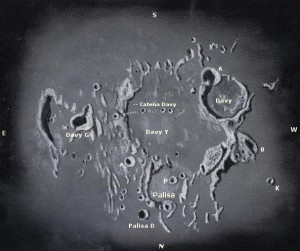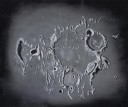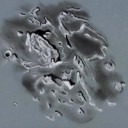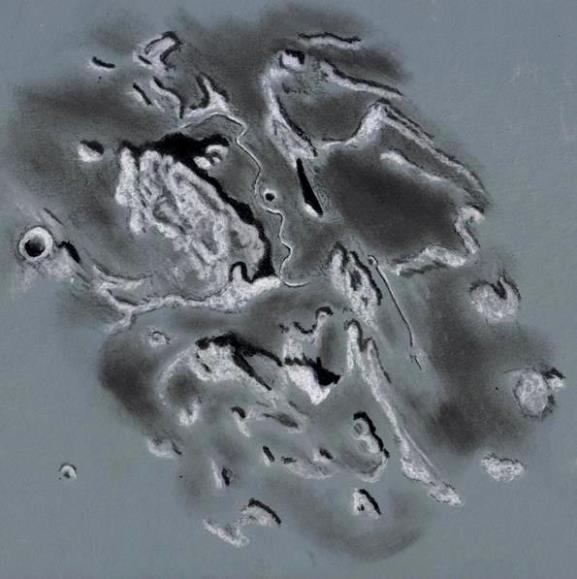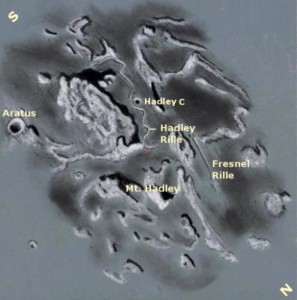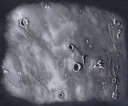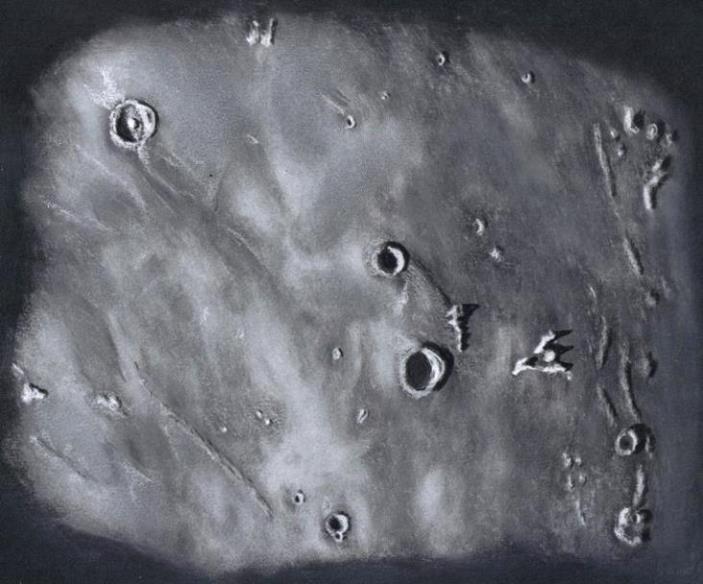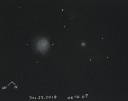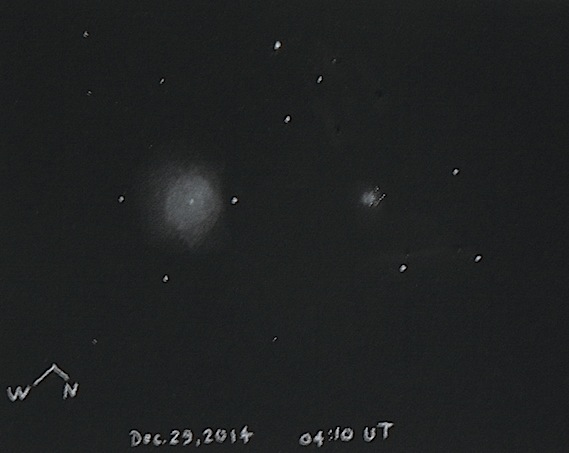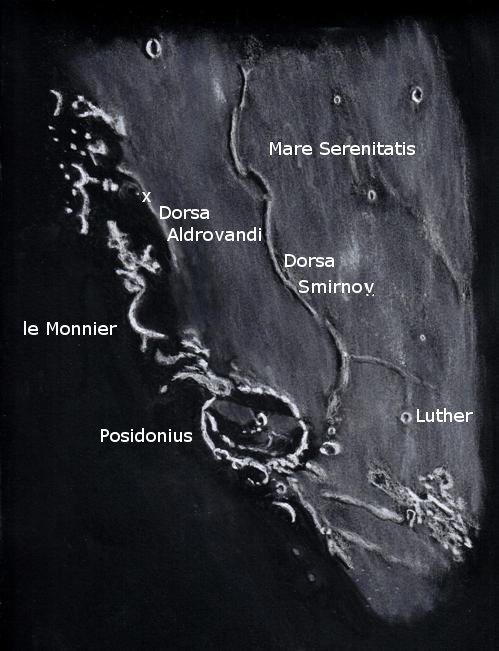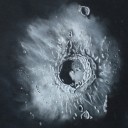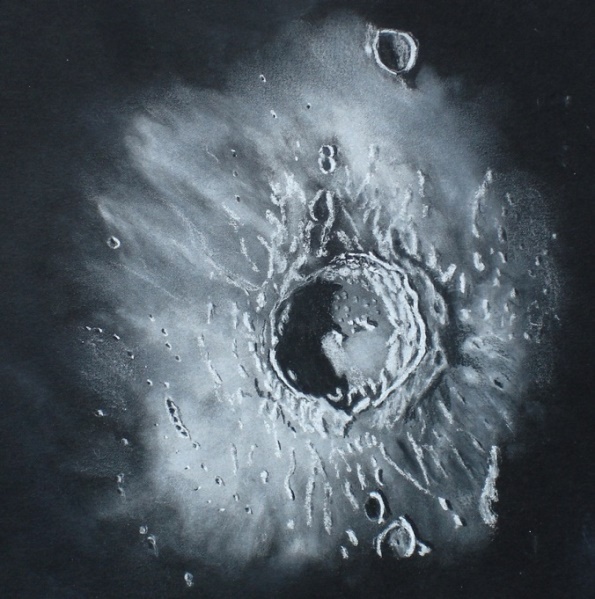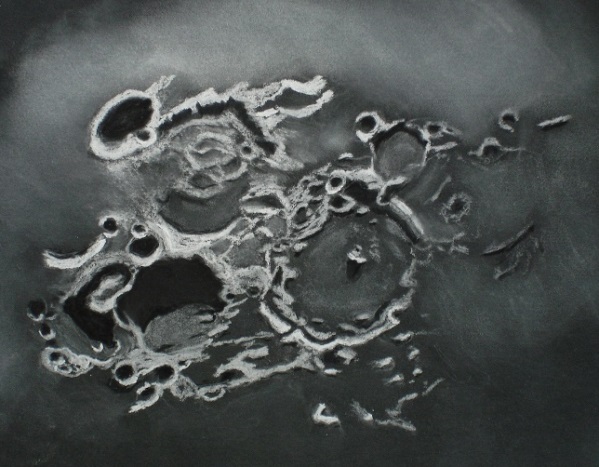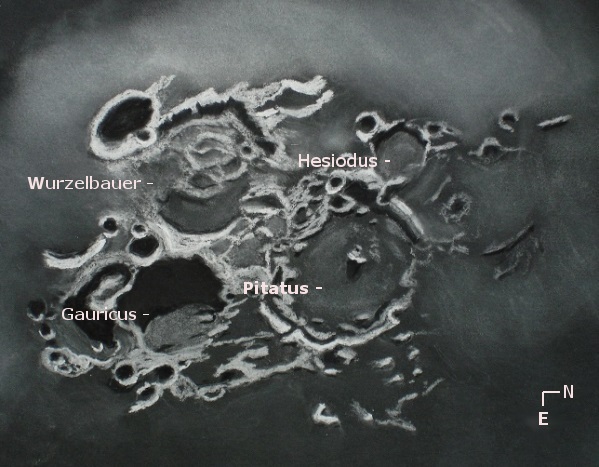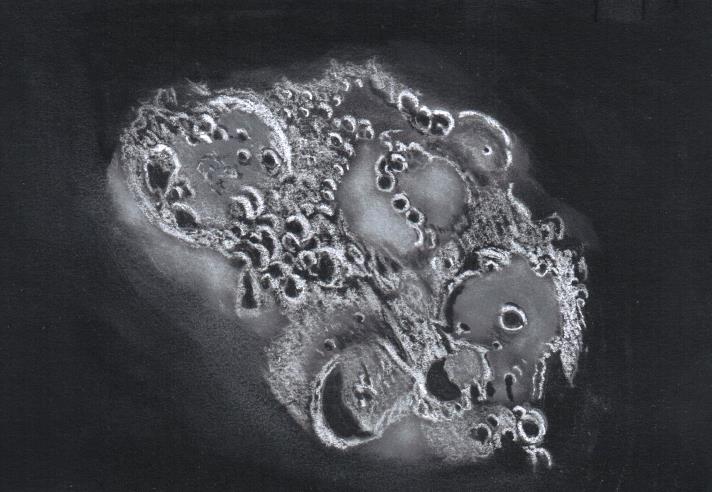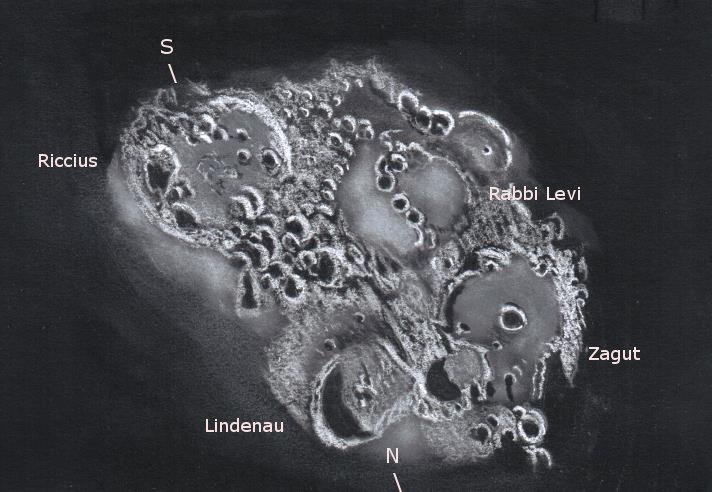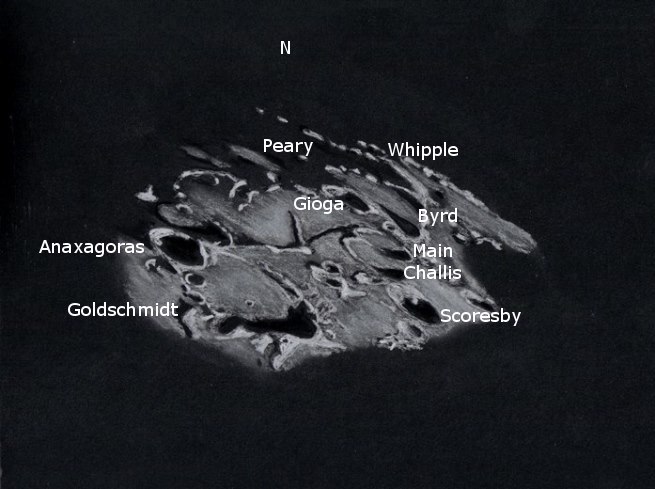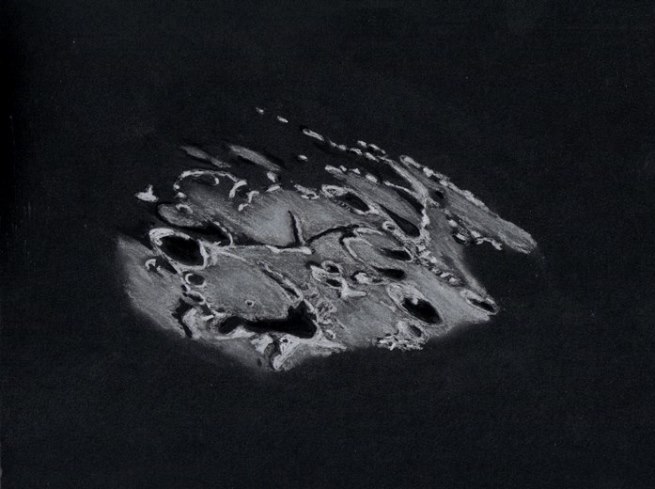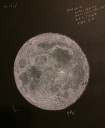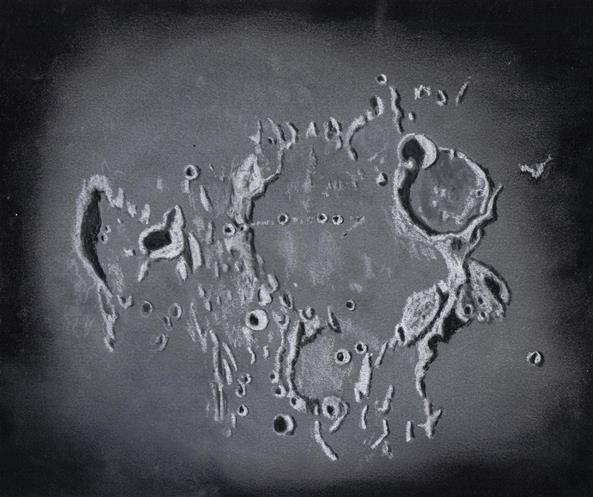
Crater Davy (35 km.) and the Davy crater chain (catena) were my targets for this evening of sketching and although the seeing and transparency were predicted to be above average that was not the case.
The Davy crater chain is 45-50 km. in extent. It arcs across the floor and eastern rim of crater Davy Y (70 km.). Since it does not line up with any impacts of note it is not likely a sequence of secondary craters. There is also no evidence of volcanic activity associated with this chain. Robert Wichman and Charles A. Wood as well as H. J. Melosh and E. A. Whitaker believe that a comet (or asteroid) may be responsible as it broke up while inside the Earth’s roche limit. As it went in on the moon like a train of meteors it would have created a chain of impacts. A paper published in 1994 by Melosh and Whitaker explains the hypothesis.
Crater Chains on the Moon: Records of Comets Split by the Earth’s Tides?; H. J. Melosh and E. A. Whitaker, Lunar and Planetary Lab, University of Arizona, Tucson, Az.
Sketching:
Black Artagain paper, white and black Conte’ pastel pencils, white Pearl eraser, blending stumps
Telescope 13.1” f/6 Dobsonian telescope on an equatorial drive platform at 332x with 6mm eyepiece
Date: 03-29-2015, 00:00 – 03:00 UT
Temperature: -5°C (24° F) clear, calm
Seeing: Variable, Antoniadi III(fair)-IV (poor)
Colongitude: 11.6 °
Lunation: 8.4 days
Illumination: 64.7 %
Frank McCabe
